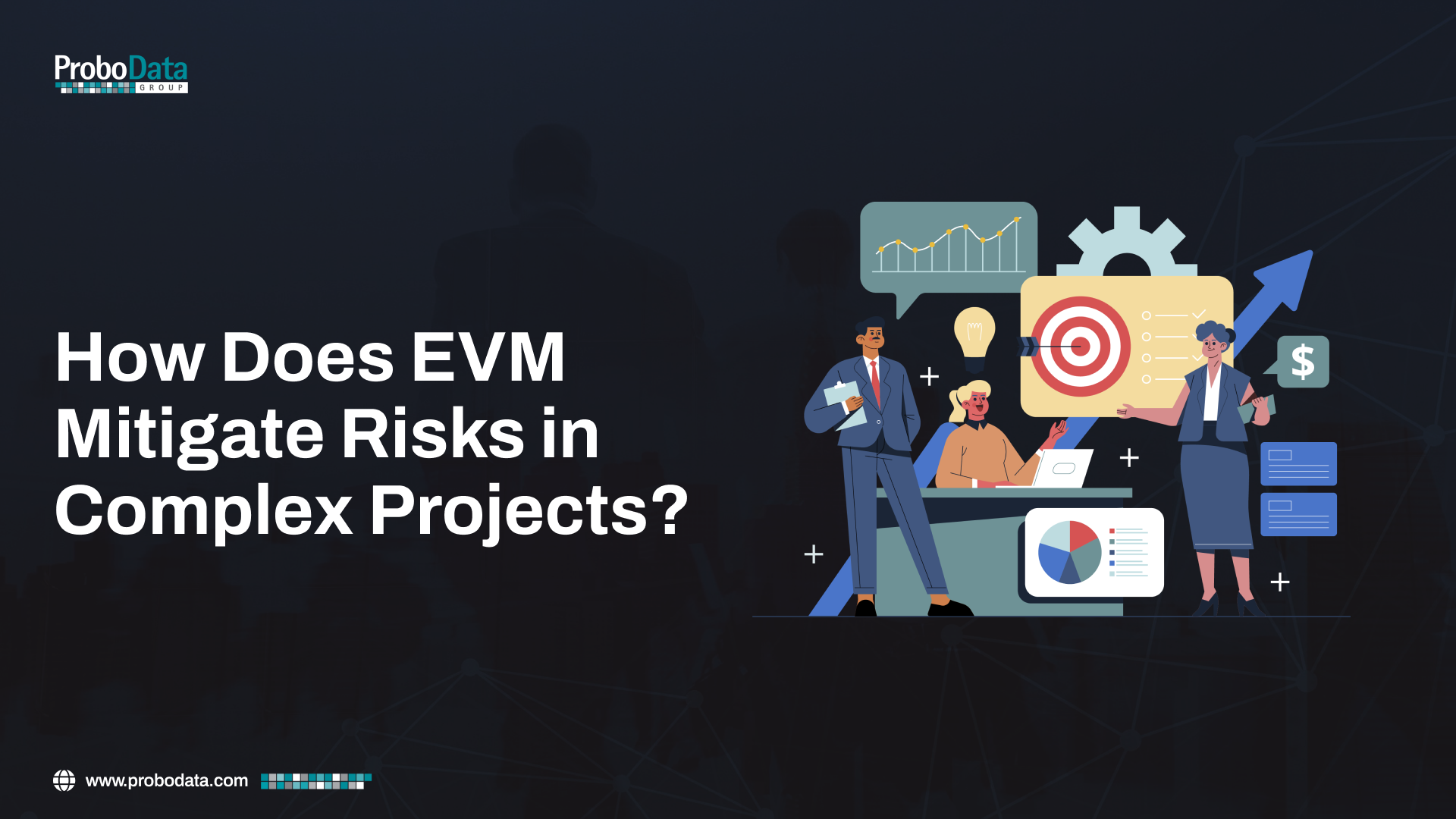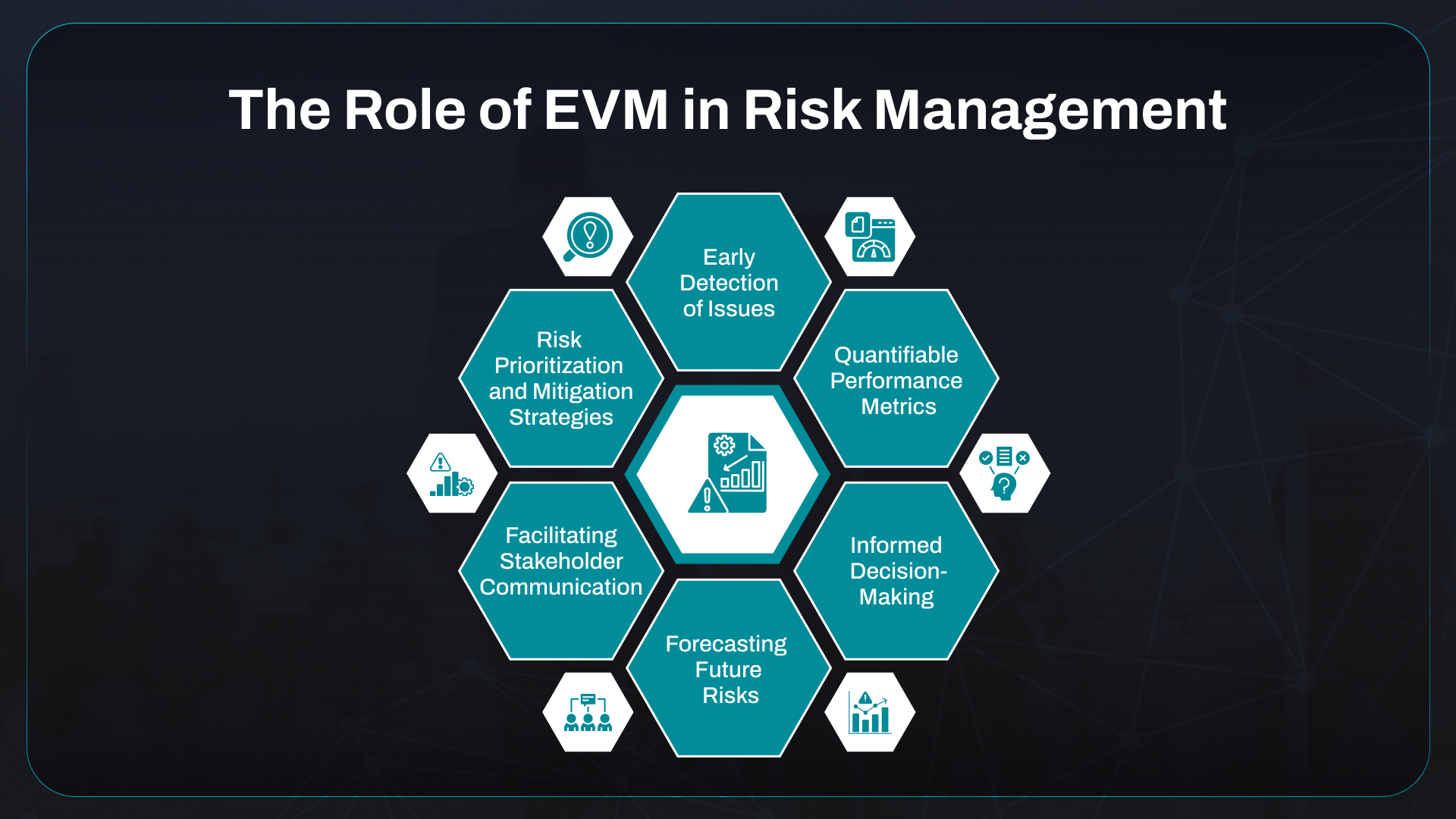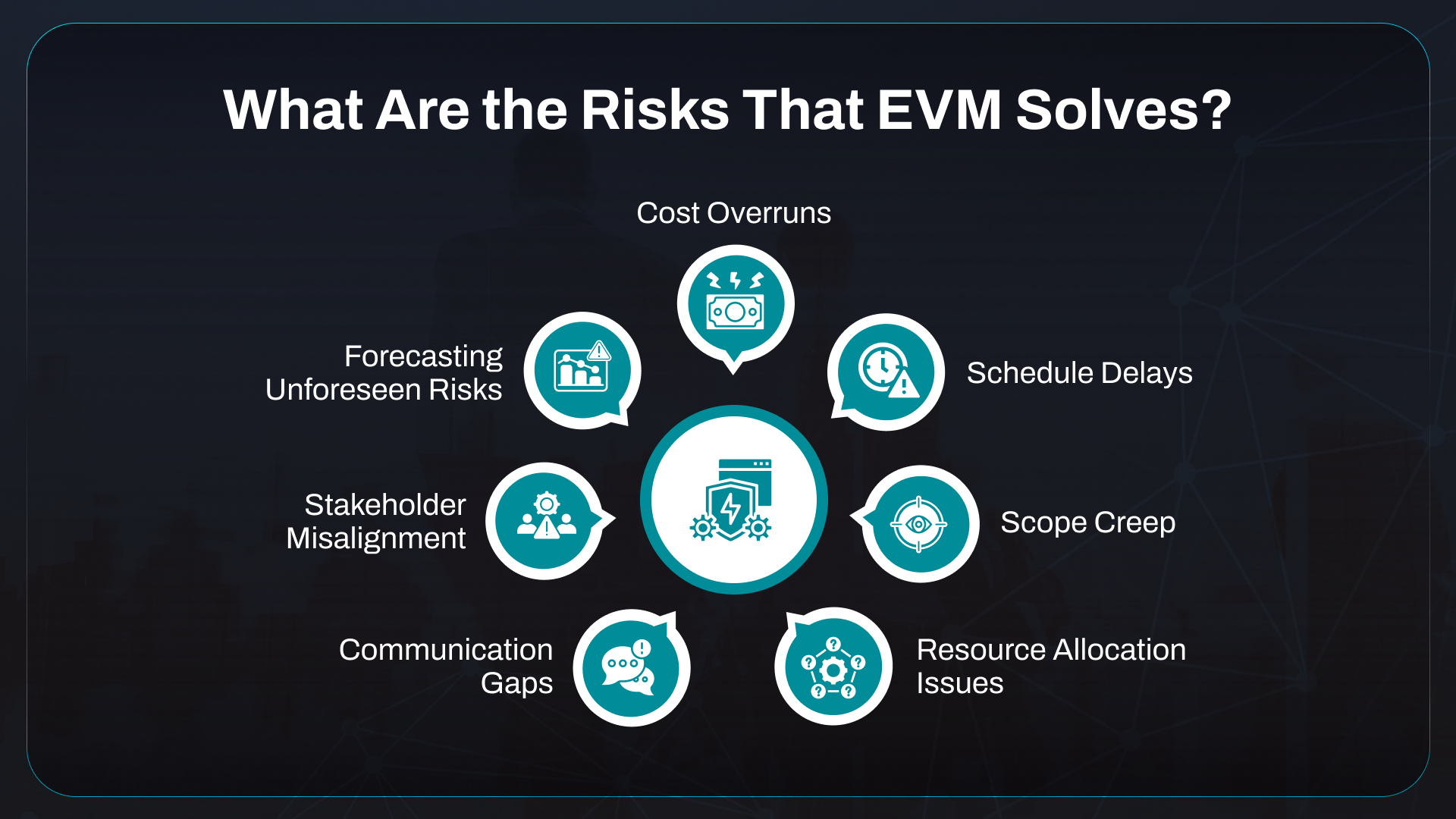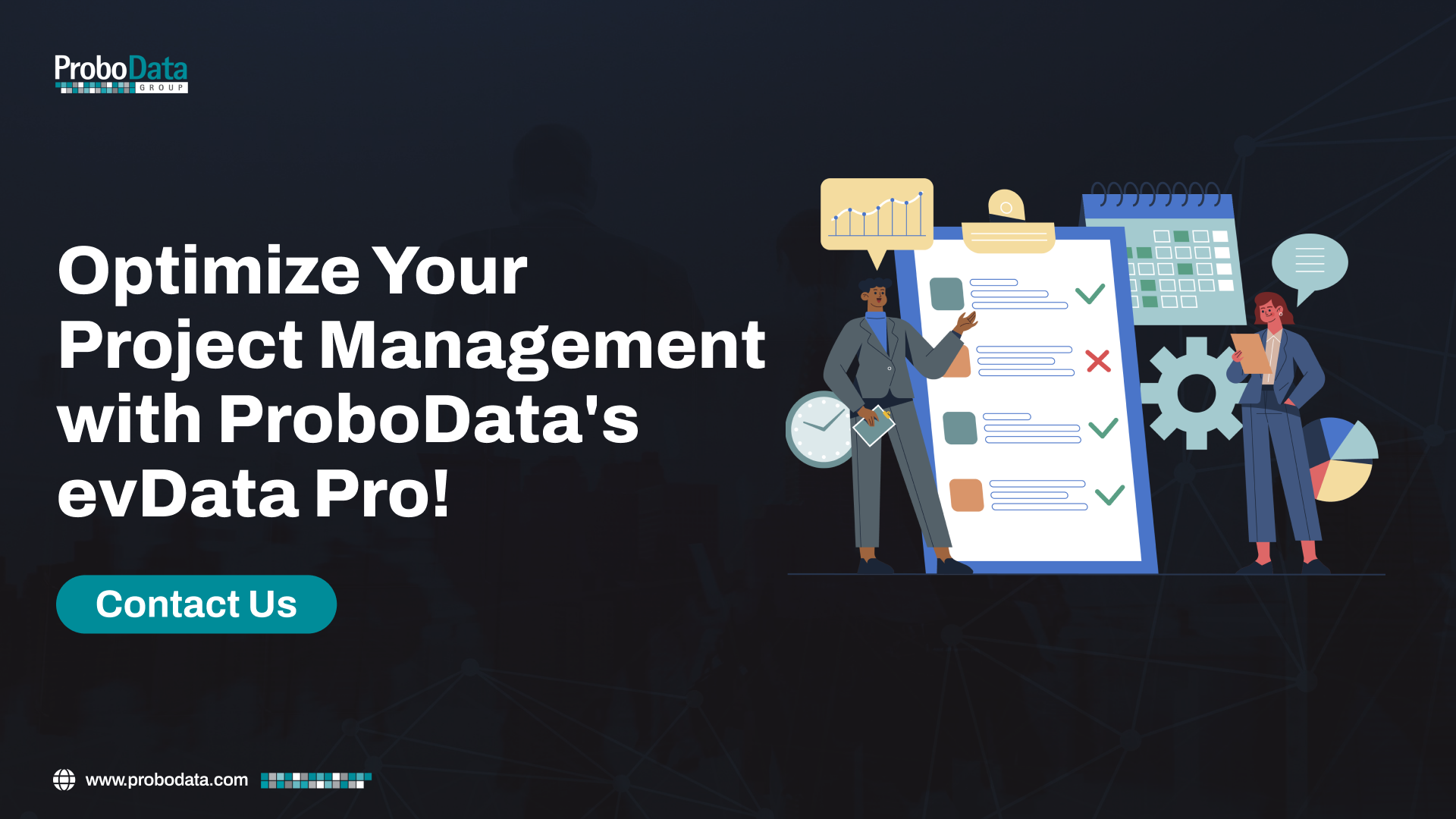
How Does EVM Mitigate Risks in Complex Projects?
Managing complex projects is overwhelming, especially with higher stakes and risks. Without the right tools, projects can spiral out of control, leading to missed deadlines, budget overruns, and dissatisfied stakeholders. A recent report from the Project Management Institute (PMI) found that organizations lost nearly 12% of their project investment due to poor performance, highlighting the need for more efficient management strategies.
To solve this problem, earned value management (EVM) offers a data-driven approach that empowers project managers to track progress and anticipate risks before they escalate. By combining cost, schedule, and work performance data, EVM helps teams stay on top of potential issues, allowing quick course actions to keep the project on track.
What is Earned Value Management (EVM)?
Earned Value Management (EVM) is a project management methodology integrating scope, cost, and schedule data to assess performance and progress. EVM provides a more comprehensive approach by combining project scope with time and cost measures, offering a detailed view of a project’s overall health, allowing project managers to determine whether they are on track, ahead, or behind in both budget and schedule.
The core of EVM lies in three essential metrics:
Planned Value (PV): Planned Value represents the value of work scheduled to be completed at a specific point in time according to the project plan. Project managers use this metric to track progress against the original schedule. PV is crucial for understanding whether the project meets its planned scope and timeline objectives.
Earned Value (EV): Earned Value is the value of the work completed at a given time. Unlike PV, which looks at what was planned, EV measures real-world progress in scope and cost. It helps assess how much of the project’s work is finished and how that compares to the original budget and timeline. This dynamic figure changes as more tasks are completed, and it provides a clear view of how much value the project has delivered.
Actual Cost (AC): Actual Cost is the total amount spent on the project so far for the work that has been completed. This figure includes all project-related expenditures, including labor, materials, and other costs. By comparing AC to PV and EV, project managers can determine whether they are overspending or underspending relative to the progress made.
Using these metrics, EVM provides indicators like Schedule Variance (SV) and Cost Variance (CV) to signal if a project deviates from the plan. This helps organizations monitor real-time performance and make data-driven decisions to correct course before minor issues escalate into more significant problems.
EVM is a widely recognized tool used in construction, IT, defense, and manufacturing to improve accountability and predictability. It is indispensable for managing complex projects with multiple moving parts. It gives stakeholders a clear picture of project progress and facilitates better forecasting and risk management.
Important Metrics Used in EVM
| Metrics | Description |
| Planned Value (PV) | The value of work should have been completed at a specific time, according to the project plan. |
| Earned Value (EV) | The actual value of the work completed at a given point in time. |
| Actual Cost (AC) | The cost incurred for the work completed by that time. |
| Schedule Variance (SV) | A measure of project performance that indicates whether the project is ahead or behind schedule. |
| Cost Variance (CV) | A measure of cost performance that indicates if the project is under or over budget. |
| Schedule Performance Index (SPI) | A ratio that measures the efficiency of time utilization on a project. |
| Cost Performance Index (CPI) | A ratio that measures the cost efficiency of the work accomplished. |
The Role of EVM in Risk Management

Earned Value Management (EVM) is important in mitigating risks in complex projects by providing an integrated framework for tracking performance, budget, and schedule. Here’s how EVM contributes to effective risk management:
1. Early Detection of Issues
EVM allows project managers to compare Planned Value (PV), Earned Value (EV), and Actual Cost (AC) throughout the project lifecycle. This helps identify variances between what was planned and what is actually happening.
If costs are higher or progress is slower than anticipated, EVM highlights these discrepancies early, enabling project teams to address them before they escalate into more significant issues.
2. Quantifiable Performance Metrics
EVM provides quantifiable metrics like Schedule Variance (SV) and Cost Variance (CV), which are critical for monitoring project health. These metrics help assess whether the project is ahead, behind, or on track regarding time and budget. This quantification allows project managers to pinpoint areas where risk is emerging and apply corrective actions, such as reallocating resources or adjusting timelines.
3. Informed Decision-Making
With accurate and ongoing data from EVM, decision-makers can make more informed choices regarding resource allocation, budgeting, and scheduling. For example, if EVM metrics indicate that a project is falling behind schedule, the management team can decide whether to extend timelines, bring in additional resources, or prioritize specific tasks. This data-driven approach minimizes guesswork and helps address potential risks proactively.
4. Forecasting Future Risks
One of the most potent aspects of EVM is its ability to forecast future performance based on current trends. Key metrics like Estimate at Completion (EAC) and Estimate to Complete (ETC) provide insights into how much more time and budget will be needed to finish the project. By continuously monitoring these estimates, project managers can foresee risks like cost overruns or delays and adjust their risk mitigation strategies accordingly.
5. Facilitating Stakeholder Communication
Effective risk management often involves clear communication with stakeholders. EVM provides a standardized, transparent way to communicate project performance, making it easier for stakeholders to understand the project’s status and emerging risks. By presenting EVM data, project managers can foster more informed discussions and align stakeholder expectations with project realities, reducing the risk of misunderstandings or conflicts.
6. Risk Prioritization and Mitigation Strategies
EVM highlights the risks and also helps prioritize them. By showing which aspects of the project are underperforming, project managers can focus on mitigating the most critical risks first. For example, if the schedule variance indicates a crucial milestone is behind, managers can deploy resources or change workflows to reduce this risk before it impacts other project areas.
What Are the Risks That EVM Solves?

Projects often encounter challenges that can affect their success, such as scope creep, resource imbalances, or communication breakdowns. Earned Value Management (EVM) offers a clear view of project performance, allowing managers to spot potential problems early and take corrective actions. Below are the risks that EVM helps identify and resolve:
1. Cost Overruns
When Cost Variance (CV) is negative, it signals potential overruns. This early detection enables project managers to implement corrective measures, such as reallocating budgets or resources, before costs spiral out of control.
2. Schedule Delays
Managers can take action if the project is behind schedule, such as adjusting resources or modifying task priorities. A proactive approach to scheduling ensures that potential delays are mitigated before they impact the project timeline.
3. Scope Creep
Scope creep, or the uncontrolled expansion of project scope, is a common risk derailing projects. Regular EVM metrics assessments can reveal whether the project stays within its defined scope. If deviations are noted, project managers can engage stakeholders to reassess and confirm project goals, thus mitigating the risk of scope creep.
4. Resource Allocation Issues
EVM provides insights into resource utilization by comparing the planned versus actual use of resources. If a project is experiencing higher-than-expected resource usage, EVM metrics can help identify this trend early on.
Consequently, project managers can reallocate resources or optimize processes to address inefficiencies, reducing the risk of resource shortages that can hinder project progress.
5. Communication Gaps
Effective communication is essential for project success, and EVM facilitates clear and consistent communication among stakeholders. By presenting EVM data visually through charts and graphs, project managers can provide stakeholders with a comprehensive overview of project performance. This transparency helps mitigate the risk of miscommunication or misunderstanding about project status.
6. Stakeholder Misalignment
EVM helps align stakeholder expectations by providing a factual basis for project discussions. Regular updates on EVM metrics can ensure that all stakeholders are informed of the project’s status, including any risks or issues that arise. This alignment minimizes the risk of conflict and ensures that all parties work toward common goals.
7. Forecasting Unforeseen Risks
The predictive capabilities of EVM enable project managers to anticipate potential risks before they materialize. By analyzing trends in Estimate at Completion (EAC) and Estimate to Complete (ETC), managers can forecast whether the project is likely to exceed its budget or timeline. This foresight allows for proactive adjustments to mitigate risks rather than reacting to issues after they occur.
Steps to Implement EVM in Your Projects
| Step | Description | Important Considerations |
| Define Project Scope | Clearly outline project objectives, deliverables, and boundaries. | Ensure all stakeholders agree on the scope to avoid scope creep. |
| Establish Baselines | Create baselines for cost, schedule, and scope. | These should serve as the standard for measuring performance. |
| Develop a Work Breakdown Structure (WBS) | Break down the project into manageable tasks and subtasks. | This should facilitate better tracking and accountability. |
| Assign Resources | Allocate resources to each task, including labor, materials, and budget. | Ensure resources are realistic and aligned with project goals. |
| Set Up EVM Metrics | Define the key EVM metrics: Planned Value (PV), Earned Value (EV), and Actual Cost (AC). | Understanding these metrics is crucial for performance evaluation. |
| Monitor Progress | Regularly track and report on project performance using EVM metrics. | Frequent updates help identify issues early. |
| Analyze Performance | Compare EV, PV, and AC to assess project health and efficiency. | Use variance analysis to identify deviations from the plan. |
| Adjust Plans | Make necessary adjustments to keep the project on track. | Be proactive in reallocating resources or revising schedules. |
| Communicate with Stakeholders | Keep all stakeholders informed about the project status and any changes. | Clear communication to foster transparency and trust. |
| Conduct Reviews | Regularly review EVM processes and metrics to ensure ongoing effectiveness. | Continuous improvement should be a goal throughout the project. |
Optimize Your Project Management with ProboData’s evData Pro!

ProboData‘s evData Pro offers a comprehensive suite of tools designed to enhance your project management practices, primarily through the implementation of Earned Value Management (EVM). By utilizing evData Pro, you can gain real-time insights into your project’s performance, track your Earned Value, Planned Value, and Actual Cost seamlessly, and make informed decisions that keep your projects on track.
Essential services offered by evData Pro include:
- Variance Analysis Reporting: Quickly identify discrepancies between planned and actual performance, allowing for timely corrective actions.
- Real-Time Tracking: Monitor project progress dynamically, ensuring you can respond to changes as they happen.
- Control Account Manager Workflows: Integrate scope, schedule, and budget management for effective oversight.
- Baseline Change Requests: Manage adjustments to project baselines efficiently, facilitating smooth transitions without compromising project goals.
Don’t let project risks derail your objectives. Equip your team with evData Pro to fully utilize EVM, simplify project workflows, and improve overall performance. Take the first step toward more efficient, risk-aware project management!
